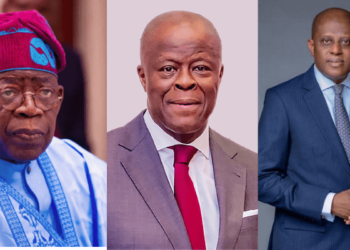Amid unhealthy rising debt profiles of the nation’s subnationals, the International Monetary Fund (IMF) has revised Nigeria’s economic growth projections upward for 2025 and 2026.
According to the latest edition of its World Economic Outlook (WEO) released in July 2025. the Fund now projects the country’s economy to grow by 3.4 per cent in 2025, compared to its April 2025 forecast of 3.0 per cent. For 2026, the IMF expects growth to reach 3.2 per cent, up from the earlier estimate of 2.7 per cent.
The global growth outlook was also adjusted. The IMF forecasts global GDP to grow by 3.0 per cent in 2025 and 3.1 per cent in 2026, representing upward revisions of 0.2 and 0.1 percentage points respectively from its April projections
For sub-Saharan Africa, the IMF projects growth of 4.0 per cent in 2025 and 4.3 per cent in 2026—slight increases from previous forecasts of 3.8 and 4.2 per cent.
“Growth is expected to be relatively stable in 2025 in Sub-Saharan Africa at 4.0 per cent, before picking up to 4.3 per cent in 2026,” the IMF noted.
Some analysts have attributed the feat to the recent rebasing, stable FX, stronger business activity that have continued to engender renewed confidence in the economy.
But, Nigeria’s state debt profile has in the same vein continued to show wide fiscal gaps, as new data reveal that several states remain heavily indebted both domestically and externally.
Lagos state topped the list with a total debt stock (both domestic and external) of N2.65 trillion (N1.04 trillion domestic and $1.05 billion external).
Specifically, the latest figures from the Debt Management Office (DMO), ahowed that the combined external debt stock of all 36 states and the FCT stood at $4.81 billion as of June 2025, equivalent to about N11.32 trillion, baaws on rhe hypotherical exchange rate of N1,529.21 to a dollar.
Infact, most of the external borrowings were from multilateral and bilateral bodies.
The domestic debt for states and the FCT also rose to N3.96 trillion ($2.59 billion) as of June 2025, marking a 2.48% increase from N3.87 trillion ($2.52 billion) recorded as of March 2025.
READ ALSO:IMF’s Georgieva Says Countries Lack Regulatory, Ethical Foundation For AI
Meanwhile, Nigeria’s total external debt, including that of the Federal Government, hit $46.98 billion during the same period.
Imo State’s total debt stood at about N262.64 billion in JUNE 2025. Of this, N97.98 billion represents domestic debt, a drop by a 19.75% from the N122.09 billion recorded in March 2025.
But, the state’s external debt remains significant at $107.67 million (N164.65 billion), forming a large chunk of its total liabilities.
However, the IMF stressed the need for structural and institutional reforms across the Sub-Saharan region, with Deniz Igan, Division Chief in the IMF’s Research Department, underscoring the place of reforms in the region’s growth and resilience.
“Further regional trade integration is one. More investment in infrastructure transportation is another one. And reform of state-owned enterprises, again, especially in the energy sector and transportation sector, is another priority,” she said.
Igan also called for equitable fiscal measures to raise revenues without worsening inequality.
“Our advice has been for the design of fiscal reforms that are equitable, that are efficient,” she said. “What we have in mind is removing poorly targeted exemptions in the tax code, making use of progressive income taxes much more, and building trust and support… by engaging with stakeholders, hearing what they need, improving governance and protecting the vulnerable.”
Pierre-Olivier Gourinchas, Director of the IMF’s Research Department, warned that high debt levels and continued deficits could leave countries vulnerable to external shocks.
“In too many countries, the combination of high public debt and still elevated public deficits continues to be a cause for concern,” he said. “Such tightening becomes even more likely if central bank independence—a cornerstone of macroeconomic, monetary and financial stability—is undermined.”













